Plaquex® IV therapy is an innovative treatment that’s gaining attention for its potential to improve cardiovascular health, lower cholesterol, support liver detox, and deliver powerful anti-aging benefits. At Recharge Clinic in Ocala, Florida, we’re proud to offer this advanced IV therapy to patients seeking a holistic approach to health and wellness. Healor - Primary Care
Plaquex® is an intravenous therapy formulated with phosphatidylcholine, a vital nutrient that helps rebuild cell membranes. Developed in Germany over 70 years ago, it was originally used to dissolve fatty emboli during trauma surgery. Today, it's used to treat atherosclerosis, liver disease, kidney issues, and more. CORR
The journey of Plaquex® IV treatment began in the 1990s when Dr. Sam Baxas used it to treat his wife’s recurring chest pain following angioplasty. Her symptoms disappeared, leading to widespread adoption. Today, Plaquex® therapy is used globally as a trusted part of Regenerative Medicine
Plaquex® works by integrating phosphatidylcholine into cell membranes, aiding in the repair of damaged cells. This process helps to: Florida Regional -+8cardiology-doctors.com+8Healor - Primary Care+8
Plaquex® has shown promise in reducing arterial plaque, thereby improving blood flow and reducing the risk of heart disease. Studies have indicated significant reductions in total cholesterol, LDL cholesterol, and triglycerides, along with increases in HDL cholesterol. Florida Regional -+1The Blend Institute+1OWM Integrative Wellness+2CORR+2Florida Regional -+2
The therapy aids in detoxifying the liver and kidneys, promoting better organ function. Research has demonstrated Plaquex®'s ability to reduce fatty deposits in the liver and improve overall organ efficiency. Florida Regional -+1The Blend Institute+1
By repairing cell membranes and improving circulation, Plaquex® contributes to healthier, more youthful-looking skin. Patients have reported enhanced skin elasticity and a reduction in wrinkles after a series of treatments .InVita Wellness+3cardiology-doctors.com+3horizonsofhealth.com+3Florida Regional -
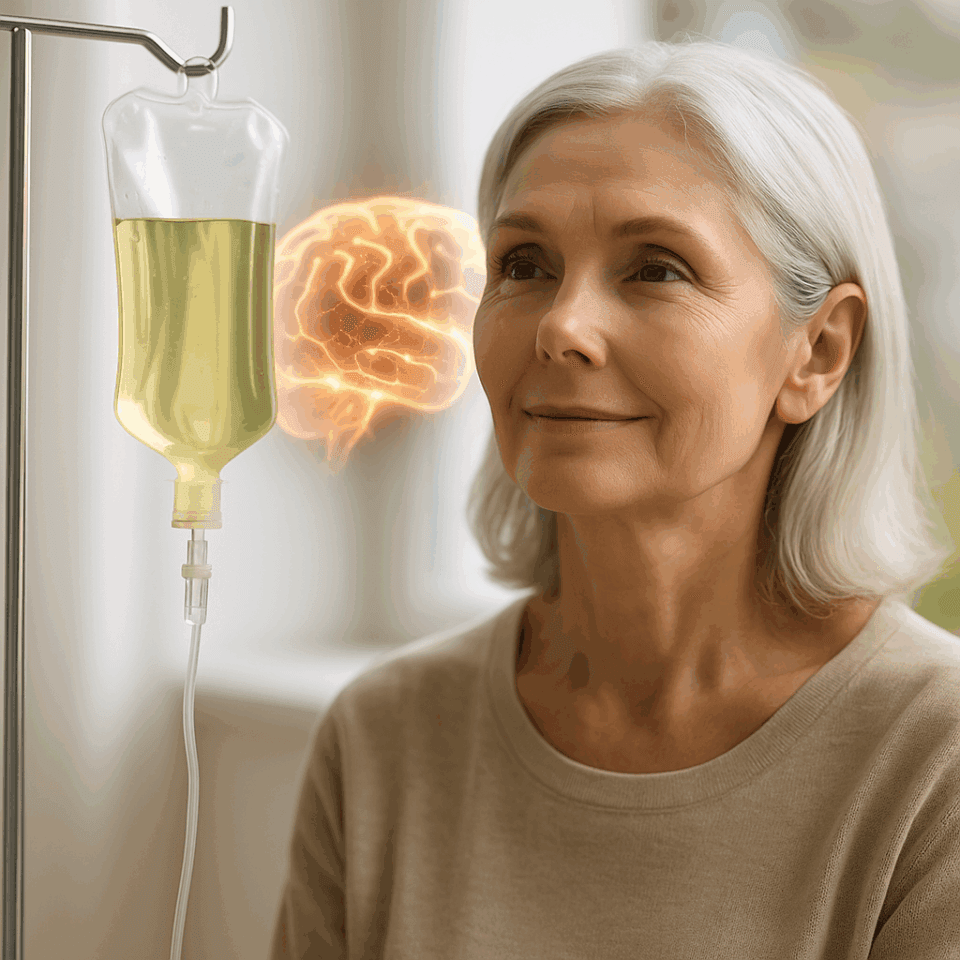
Improved blood flow and cell membrane repair can lead to better cognitive function. Some patients have experienced enhanced memory and mental clarity following therapy .Florida Regional -+12horizonsofhealth.com+12Florida Regional -+12cardiology-doctors.com+1InVita Wellness+1
For optimal results, a series of Plaquex® IV treatments is recommended. Typically, patients undergo 20 sessions, with maintenance treatments as needed. Each session lasts approximately 90 minutes and is administered under medical supervision.
Plaquex® is generally well-tolerated. Some patients may experience mild side effects such as:
These symptoms are usually temporary and resolve without intervention. It's essential to consult with a healthcare provider before starting therapy, especially for individuals with existing medical conditions or those taking medications .
At Recharge Clinic, we are dedicated to providing cutting-edge treatments to enhance your health and well-being. Our experienced medical team will assess your individual needs and develop a personalized Plaquex® IV therapy plan. We prioritize patient safety and comfort, ensuring each session is conducted with the utmost care.
Plaquex® IV therapy offers a multifaceted approach to health, targeting cardiovascular issues, supporting organ function, and promoting anti-aging benefits. With a history rooted in medical innovation and a growing body of supportive research, Plaquex® stands as a promising option for those seeking comprehensive wellness solutions.
If you're interested in exploring the benefits of Plaquex® IV therapy, contact Recharge Clinic in Ocala, Florida, to schedule a consultation. Our team is here to guide you on your journey to optimal health.
References
If you're looking for a simple, daily habit that can have a huge impact on your overall health and well-being, let's talk about probiotics. These "friendly bacteria" are the unsung heroes of gut health, immunity, mental clarity, and even skin radiance! At Recharge Clinic, we know that vibrant health starts from within, and one of our top recommendations is Fortifeye Probiotics — a potent, scientifically designed supplement that supports the body from the inside out.
In this blog, we’ll dive deep into why probiotics are essential for everyone, how often you should take them, what makes a good probiotic, and why they are crucial especially after taking antibiotics. And don't worry — we'll keep it light, fun, and educational. After all, learning about your health should be exciting!
Short answer: Everyone.
Whether you're young, old, male, female, an athlete, a busy professional, or a supermom, probiotics can benefit you. The human body hosts trillions of bacteria (source: Harvard Health) — both good and bad — and maintaining the right balance between them is critical for overall health.
Probiotics can help:
Whether you're perfectly healthy or dealing with occasional digestive discomfort, incorporating a daily probiotic like Fortifeye Probiotics is a proactive step towards optimal wellness.
Consistency is key!

Probiotics are most effective when taken daily. Think of them like watering a plant. If you forget to water it for a week and then drench it all at once, it doesn't thrive. Your gut bacteria thrive on regular nourishment and balance.
At Recharge Clinic, we encourage our patients to take Fortifeye Probiotics every morning, ideally on an empty stomach for maximum absorption. (Some studies, like this from Cleveland Clinic, suggest that morning or before meals may be ideal.)
Quick Tip: Traveling? New diet? Stressful week? These are times when your gut flora can be especially vulnerable. Stick to your probiotics routine no matter what — your body will thank you!
Not all probiotics are created equal.
You want a probiotic that:
Fortifeye Probiotics ticks all these boxes. Formulated with a blend of powerful, clinically studied strains, it supports not just your gut health but your overall immune system and well-being. Unlike many probiotics that lose their potency, Fortifeye Probiotics are designed to stay strong, giving you maximum benefit with every capsule.
Want to learn more about probiotic strains and their specific benefits? Check out Johns Hopkins Medicine.
Let's break it down simply: your gut is like a garden. It needs a healthy mix of organisms to thrive. Unfortunately, modern life (hello, processed foods, stress, antibiotics, pollution) constantly attacks our gut flora.
Taking probiotics helps to:
Without a balanced gut microbiome, you may experience everything from fatigue, poor digestion, weight gain, to brain fog. It's no exaggeration to say that a happy gut often means a happy you.
Our team at Recharge Clinic has seen firsthand how clients who start a daily probiotic routine, especially with Fortifeye Probiotics, often report feeling "lighter," "more energized," and "less bloated" within just a few weeks.
Antibiotics are life-saving — no doubt about it. But while they kill off harmful bacteria, they also wipe out the beneficial bacteria living in your gut. This leaves you vulnerable to all sorts of problems, including digestive issues, yeast overgrowth, and weakened immunity.
According to Mayo Clinic, taking probiotics during and after an antibiotic course can significantly reduce the risk of antibiotic-associated diarrhea and help your microbiome recover faster. (Mayo Clinic Link)
When you finish a course of antibiotics, it's critical to "reseed" your gut with good bacteria. Fortifeye Probiotics is a fantastic choice because it contains robust strains specifically chosen for their ability to survive and colonize the gut.
Pro Tip: Start probiotics as soon as you start your antibiotic course and continue for several weeks after finishing.
Fortifeye Probiotics is not just another supplement on the shelf. It's trusted by health professionals, including our own team at Recharge Clinic. Here's why:
When our patients ask us what they can do to improve their gut health, skin, energy, and immune resilience, Fortifeye Probiotics is often the first recommendation.
Taking a high-quality probiotic like Fortifeye Probiotics is one of the simplest, most powerful ways to support your health naturally. It's an investment in your digestion, immunity, mental health, and overall vitality.
Ready to feel your best? Start your daily Fortifeye Probiotics journey today and watch your body transform from the inside out. And remember, the team at Recharge Clinic is always here to support you on your path to vibrant health!
Stay happy, stay healthy, and trust your gut!
Sources:
Feeling sluggish? Constantly fatigued? Or maybe you’re experiencing frequent headaches or shortness of breath? These could be signs of iron deficiency, a common issue that affects millions of people worldwide. But don’t worry: at Recharge Clinic, we offer a modern, science-backed solution to help restore your energy and vitality — Iron IV Infusions! Let’s dive into the amazing benefits of iron IV infusions and why they might be just what you need to feel your best.
Iron is a crucial mineral that our bodies need to produce hemoglobin, a protein in red blood cells that carries oxygen throughout the body. When you don’t have enough iron, your body can’t produce enough healthy red blood cells, leading to iron deficiency anemia. This condition can leave you feeling tired, weak, and irritable, and it can even affect your cognitive function and immune system.
For many people, the go-to solution for iron deficiency is oral iron supplements. While these can be effective for some, they come with a host of potential issues. Oral supplements can take a long time to replenish iron levels, and they often cause unpleasant side effects like constipation, nausea, and stomach pain. Additionally, some people have trouble absorbing iron from supplements due to gastrointestinal issues or other health conditions.
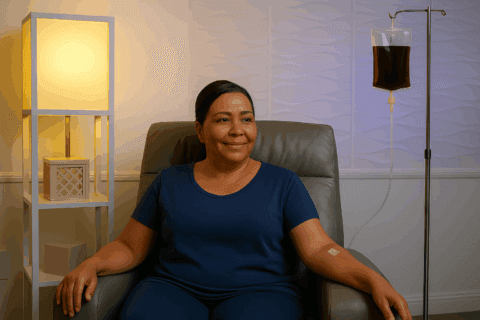
Iron IV infusions at Recharge Clinic offer a powerful and efficient alternative to oral supplements. Here’s why they’re a game-changer:
One of the biggest advantages of iron IV infusions is the speed at which they work. Unlike oral supplements, which can take weeks or even months to show results, iron IV infusions deliver iron directly into your bloodstream. This allows your body to quickly and efficiently use the iron to produce red blood cells, leading to a rapid improvement in symptoms.
When you take iron orally, it has to pass through your digestive system, where absorption can be hindered by various factors. With IV infusions, the iron bypasses the digestive tract entirely, ensuring 100% absorption. This makes IV infusions particularly beneficial for people with absorption issues or those who haven’t responded well to oral supplements.
Iron IV infusions typically cause fewer gastrointestinal side effects compared to oral supplements. This means you can avoid the constipation, nausea, and stomach pain that often accompany oral iron therapy. Plus, since the infusion is administered by medical professionals, any potential side effects can be managed promptly and effectively.
At Recharge Clinic, we understand that your time is valuable. Our iron IV infusions are designed to be quick and convenient, typically taking about 30-60 minutes. You can relax in a comfortable setting while our skilled healthcare providers ensure that you receive the best care. And with our multiple locations, getting an iron infusion has never been easier.
Iron IV infusions can benefit a wide range of people, including:
- Athletes: Intense physical activity can deplete iron levels, leading to fatigue and decreased performance. An iron infusion can help you maintain your energy and stamina.
- Women: Menstrual blood loss is a common cause of iron deficiency in women. IV infusions can quickly replenish iron stores, helping to alleviate symptoms like fatigue and weakness.
- Vegetarians and Vegans: Plant-based diets can sometimes lack sufficient iron. IV infusions provide a direct source of iron, ensuring you get the nutrients you need without changing your diet.
- Individuals with Chronic Illnesses: Conditions like chronic kidney disease, inflammatory bowel disease, and celiac disease can affect iron absorption and lead to deficiency. Iron IV infusions offer a reliable way to boost iron levels in these cases.
At Recharge Clinic, we pride ourselves on delivering exceptional, patient-centered care designed to help you feel your best. Our team of experienced medical professionals takes the time to understand your unique health needs, ensuring that every iron infusion treatment is safe, effective, and tailored to your personal wellness journey.
We combine cutting-edge therapies with a warm, welcoming environment so you can relax while your body receives the vital nutrients it needs. Whether you’re battling iron deficiency, looking to boost your energy, or simply want to reclaim your vitality, we’re here to support you every step of the way.
Come experience the Recharge difference — because you deserve to live life fully charged!
1. Mayo Clinic: Provides comprehensive information about iron deficiency anemia, including symptoms, causes, and treatments.
- [Iron deficiency anemia - Symptoms and causes](https://www.mayoclinic.org/diseases-conditions/iron-deficiency-anemia/symptoms-causes/syc-20355034)
2. WebMD: Discusses the symptoms, causes, and treatment options for iron deficiency, including the benefits of iron infusions.
- [Iron Deficiency Anemia](https://www.webmd.com/a-to-z-guides/understanding-anemia-basics)
3. Cleveland Clinic: Offers detailed information on the diagnosis and treatment of iron deficiency anemia, including the role of IV iron therapy.
- [Iron Deficiency Anemia: Symptoms, Causes, Treatments](https://my.clevelandclinic.org/health/diseases/17738-iron-deficiency-anemia)
4. American Society of Hematology: Provides information on iron deficiency and the various treatment options available, including intravenous iron therapy.
- [Iron-Deficiency Anemia](https://www.hematology.org/education/patients/anemia/iron-deficiency)
5. Healthline: Covers the symptoms, causes, and treatments of iron deficiency anemia, with a focus on the benefits of iron IV infusions.
- [Everything You Need to Know About Iron Infusions](https://www.healthline.com/health/iron-infusion)
In the world of aesthetics, there's always something new on the horizon. But some trends aren't just fads — they're game changers. Enter Bio Filler with Platelet Rich Fibrin (PRF), a completely natural, cutting-edge option for anyone looking to refresh and rejuvenate their look. If you've been dreaming about a youthful glow without synthetic products, you're going to love what Recharge Clinic in Ocala, Florida has to offer!
Let's dive deep into the beauty of PRF, find out who the best candidates are, what areas you can treat, and why Recharge Clinic is the go-to place to get it done.
Platelet Rich Fibrin (PRF) is derived from your own blood — think of it as liquid gold for your skin! It's a second-generation PRP (Platelet Rich Plasma) that contains not just platelets, but also white blood cells and a fibrin matrix that acts as a natural scaffold, slowly releasing growth factors over time.
When used as a bio filler, PRF is spun down and processed to create a gel-like substance. This substance is then injected into specific areas where volume loss, wrinkles, and sagging skin are concerns. Unlike synthetic fillers, PRF works with your body to regenerate tissues, boost collagen production, and improve overall skin quality — naturally.
For more scientific insights, check out this overview of PRF from the National Institutes of Health.
Bio Filler is excellent for almost anyone looking to:
However, ideal candidates should be in generally good health, non-smokers, and free from significant blood disorders. It's especially perfect for individuals who are hesitant to use synthetic fillers like hyaluronic acid or want a more holistic, regenerative approach.
If you're unsure whether you're a candidate, the friendly and experienced team at Recharge Clinic offers personalized consultations to craft the perfect treatment plan for you!
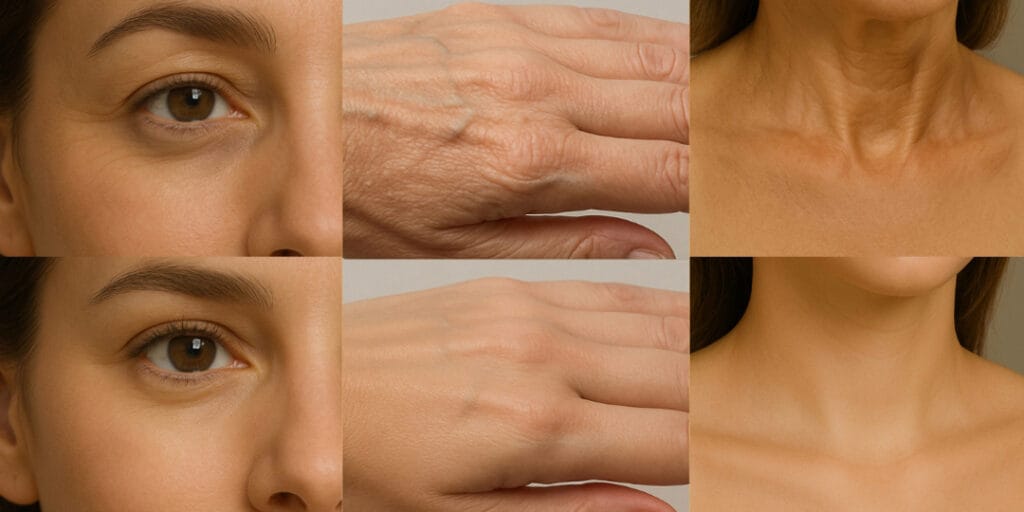
One of the coolest things about PRF Bio Filler is how versatile it is! Here's where you can see incredible results:
1. Under Eyes
Tired of looking, well, tired? PRF is amazing for filling in the hollow under-eye area, minimizing dark circles, and smoothing out fine lines.
2. Face
Loss of volume in the cheeks, nasolabial folds, and jawline? PRF can subtly and naturally plump these areas, giving you that "refreshed" look without seeming overdone.
3. Décolletage
Sun damage and aging can make the delicate chest area look crepey. PRF stimulates collagen and restores youthful firmness.
4. Back of Hands
Hands often give away our age. PRF replenishes volume and improves skin texture, helping hands look soft and youthful again.
5. Labia Rejuvenation
Yes, you read that right! PRF can help restore volume and improve tissue quality in the labial area, enhancing comfort and confidence. For more information on intimate PRF procedures, check out this detailed article from AEDIT.
6. Neck and Other Delicate Areas
Loose, thinning skin on the neck or around the mouth? PRF bio filler offers a gentle and effective solution without the risks associated with synthetic fillers.
7. Acne Scars and Other Skin Irregularities
PRF can be strategically placed to smooth out acne scars and other textural issues, helping to achieve a more even, radiant complexion.
Recharge Clinic isn't just a clinic — it's an experience. Here’s why choosing Recharge means you're setting yourself up for success:
Check out more about the clinic here!
The whole process takes about an hour, and you can typically return to normal activities the same day. Expect some minor swelling or redness, but this usually resolves quickly.
Results are gradual, as PRF stimulates your body’s natural healing processes. Improvements in skin quality and volume will continue over several weeks to months — and the best part? Results are long-lasting and can be boosted with follow-up treatments.
Natural beauty is timeless, and with PRF Bio Filler at Recharge Clinic, you can achieve a rejuvenated, radiant look without artificial fillers. Whether you're targeting under-eye hollows, sun-damaged skin, or intimate rejuvenation, Recharge Clinic has the expertise to help you feel your best from the inside out.
Don't wait to become the best version of yourself! Book your free consultation today at Recharge Clinic or call (352) 512-9996.
Stay youthful. Stay natural. Stay recharged.
References:
In today’s world, the hidden dangers of plastic are everywhere—from the packaging of our food and drinks to clothing, household products, and even the air we breathe. While plastic has revolutionized modern convenience, its hidden health dangers are becoming increasingly clear. Recent studies show that by adulthood, humans may carry the equivalent of one plastic bag’s worth of microplastics in their bodies (The Guardian). Microplastics and nanoplastics (even tinier plastic particles) have been found in the bloodstream, lungs, brain, and even placentas of unborn babies.
Microplastics (less than 5mm in size) and nanoplastics (which are microscopic) come from the breakdown of plastic products, synthetic clothing, food packaging, and industrial waste. These tiny particles enter our bodies through:
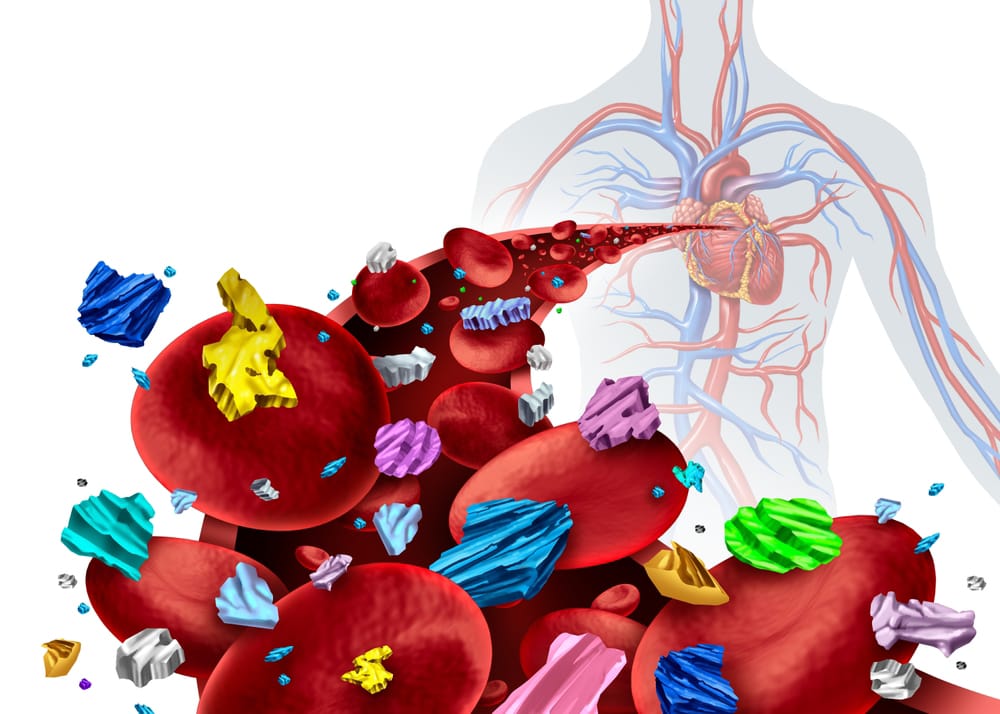
Once inside the body, microplastics don’t just pass through—they accumulate in tissues and organs. Emerging research suggests they can:
While avoiding plastics entirely is impossible, there are effective ways to reduce exposure and detox microplastics from your body.
The best way to protect yourself is by reducing plastic intake wherever possible. Here are practical steps you can take:
1. Ditch Plastic for Food & Drinks
2. Filter Your Water
3. Avoid Synthetic Clothing & Home Products
4. Choose Better Food Packaging
Once microplastics are inside the body, they don’t break down easily. However, you can support your body’s natural detox pathways to eliminate them more effectively.
1. Eat a High-Fiber, Antioxidant-Rich Diet
2. Support Liver & Kidney Detoxification
The liver is responsible for processing toxins, while the kidneys filter them out. These natural detox aids help:
3. Use Natural Detox Binders
4. Sweat it Out
5. Consider Fasting & Gut Health Support
At Recharge Clinic, we understand that microplastic exposure can disrupt your hormones, metabolism, and detox pathways. If you’ve been experiencing symptoms of fatigue, weight gain, hormone imbalances, or inflammation, our expert team offers:
We help you regain optimal health and vitality by addressing the root cause of toxin buildup.
Plastics are unavoidable, but you can take proactive steps to limit exposure and help your body detox. By choosing safer alternatives, supporting detox pathways, and maintaining a healthy diet, you can reduce the harmful effects of microplastics.
If you need personalized support for detoxification, hormone balance, or overall wellness, Recharge Clinic is here to help.
Book a consultation today to start your journey toward a cleaner, healthier body.
• The Guardian – Microplastics in the Brain
• National Geographic – Microplastics in Food & Water
• Nature – Nanoplastics & Blood-Brain Barrier
• Harvard Health – Plastics & Hormone Disruption
In today’s fast-paced world, where seasonal flus, stomach bugs, and COVID-related symptoms are all too common, finding prompt and urgent care is more critical than ever. At Recharge Clinic, we combine science-backed treatments with same-day care, ensuring you get the quality help you need—fast and without the heavy costs of an Emergency Room (ER) visit.
In this blog, we’ll explore the current trends in illnesses, compare our efficient care model with traditional ER services, and highlight how our streamlined approach helps you get back on your feet quickly—all while keeping things engaging and informative.
Seasonal illnesses are a reality each year, and recent data from leading health organizations shows an increase in cases of the flu, gastrointestinal infections, and various COVID strains. The Centers for Disease Control and Prevention (CDC) reports that influenza affects millions of people annually, while the Mayo Clinic underscores the highly contagious nature of stomach bugs (CDC , Mayo Clinic ).
Key scientific insights include:
These findings underscore the importance of timely, evidence-based treatment—a philosophy at the heart of Recharge Clinic’s approach.
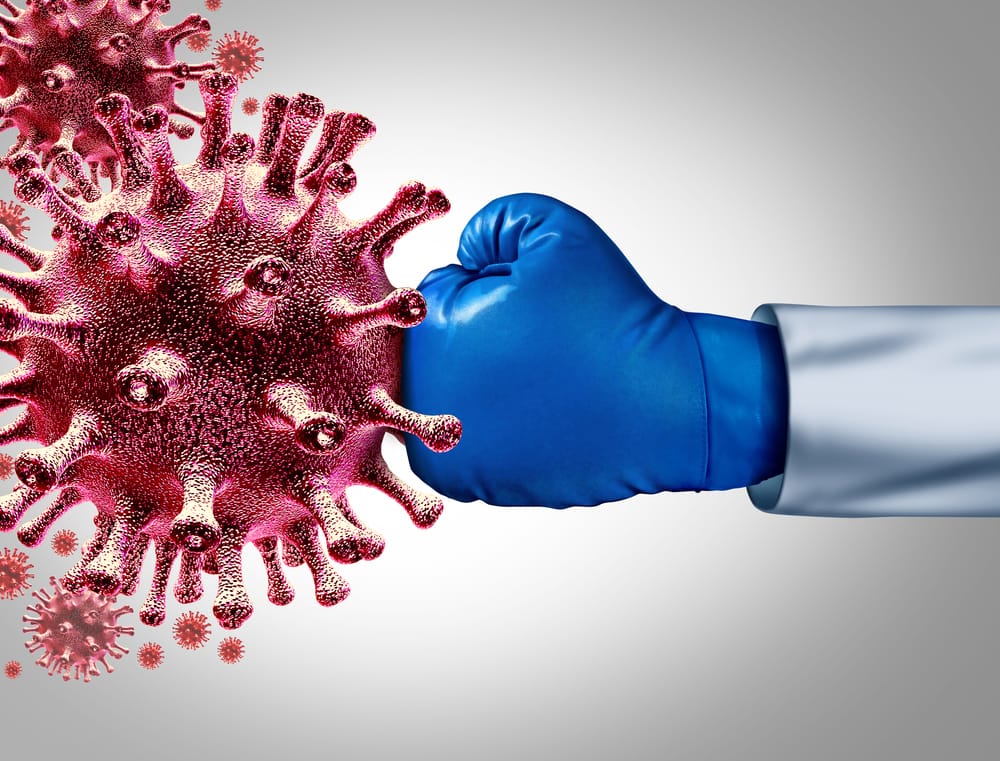
When you’re under the weather, the last thing you want is to be stuck in a crowded ER with long wait times and astronomical bills. Recharge Clinic is designed to offer a more efficient and cost-effective alternative for non-life-threatening conditions. Here’s how we stand out:
At Recharge Clinic, most patients are seen the same day they schedule their visit. This rapid response means you’re not left waiting for hours in a busy emergency room. Whether you need a quick evaluation or immediate treatment, our streamlined processes ensure you receive the care you need without unnecessary delays.
Our pricing is straightforward and significantly lower than ER costs. For example:
In contrast, an average ER visit—which includes diagnostics, an IV treatment, and prescribed medications—can easily range from $1,500 to $3,000. Not only do you save money, but you also avoid the longer wait times and higher co-pays often associated with emergency services (Health Affairs ).
Recharge Clinic isn’t just about immediate care; we’re committed to providing a holistic health experience. Once you’re evaluated, we can send your prescriptions directly to your chosen pharmacy, or if needed, dispense medications on-site. This integrated approach eliminates the need for multiple stops and helps you get home to recover faster.
Here’s a fun, quick rundown of what makes Recharge Clinic the smart choice for urgent care:
Imagine waking up with a fever and a lingering cough. Instead of heading to a crowded ER with long wait times and a high bill, you call Recharge Clinic. Within a few hours, you’re welcomed into a comfortable, modern facility where a healthcare professional quickly evaluates your symptoms.
Here’s what happens next:
This approach not only speeds up your recovery but also minimizes your exposure to other pathogens—a benefit not often associated with lengthy ER stays.
Understanding the practical differences between an ER visit and a trip to Recharge Clinic is essential when making healthcare decisions. Here’s a straightforward comparison:
These differences highlight how Recharge Clinic not only saves you money but also provides a more personalized and efficient healthcare experience.
Quick intervention is critical—not just for your health, but for reducing the overall strain on our healthcare system. By choosing urgent care over ER visits for non-emergencies, you help to reserve emergency resources for true life-threatening situations. This shift supports a more efficient and sustainable healthcare system for everyone.
Moreover, timely care means a faster recovery, less time off work or school, and a lower risk of complications from untreated conditions. With science-backed treatments and a patient-centered approach, Recharge Clinic is at the forefront of this modern healthcare evolution.
In a world where illness seems to be just around the corner, having a reliable and efficient healthcare option is a game-changer. Recharge Clinic offers a fast, cost-effective, and science- supported alternative to traditional ER visits. Whether you’re dealing with a seasonal flu, a stomach bug, or the early symptoms of COVID-19, our team is dedicated to getting you well quickly, without the stress and expense of an emergency room.
For more information on managing seasonal illnesses and understanding your treatment options, check out resources from the CDC , Mayo Clinic , and WebMD.
Remember, when you’re feeling unwell, recharge your health and your wallet by choosing a care model that works smarter, not harder. Recharge Clinic is here to provide the expert, same-day care you need to get back on track—fast.
By streamlining the process, reducing wait times, and cutting costs significantly, Recharge Clinic is transforming how urgent care is delivered. When it comes to staying ahead of the sickness curve, a swift visit to Recharge Clinic is a prescription for better health.
Hormone replacement therapy (HRT) has long been a cornerstone for managing menopausal symptoms, hormonal imbalances, and age-related hormone decline. For decades, synthetic hormones promoted by big pharmaceutical companies have been the standard treatment. However, in recent years, many patients and practitioners have shifted their focus toward identical hormone replacement therapy—often referred to as bioidentical hormone replacement therapy (BHRT). At Recharge Clinic, we’re excited to offer an approach that harnesses nature’s blueprint, ensuring your treatment is as close to your body’s natural hormones as possible.
In this blog, we’ll explore the science behind identical hormones, compare them with synthetic alternatives, and break down the differences in health benefits, side effects, and overall safety—all while keeping the tone fun and engaging. So grab a cup of your favorite beverage, sit back, and let’s dive into why identical hormone replacement therapy might be the best option for you!
Hormones play a pivotal role in our body’s functioning—from regulating metabolism and mood to supporting reproductive health. When hormone levels begin to dip, many individuals experience a range of symptoms including hot flashes, mood swings, weight gain, fatigue, brain fog, low libido, and even bone density loss. These symptoms can significantly impact your quality of life, making hormone therapy an attractive option for those seeking relief.

For over 50 years, synthetic hormones have been at the forefront of HRT. These are man-made compounds designed to mimic the effects of naturally occurring hormones. While effective in many cases, synthetic hormones differ chemically from the hormones produced by your body, which can sometimes lead to unwanted side effects. Traditional HRT typically includes synthetic estrogens and progestins, which have been associated with increased risks of blood clots, stroke, and even certain types of cancer.
Identical or bioidentical hormones are chemically indistinguishable from those produced naturally in the human body. Their molecular structure is identical, meaning that when introduced into the body, they interact more seamlessly with hormone receptors. This similarity often translates to fewer adverse effects and improved overall balance.
Fun Fact: The term "bioidentical" simply means “exactly the same as what your body produces”—think of it as a custom-tailored suit for your endocrine system!
One of the main advantages of identical hormone replacement therapy is its molecular compatibility with your own hormones. Because they are structurally identical, these hormones are metabolized more naturally, minimizing the risks of unintended interactions. Studies have shown that a more natural match can lead to better receptor binding, which means the body is more efficient at utilizing these hormones for its various functions.
Synthetic hormones have been linked to several side effects ranging from mood alterations to an increased risk of cardiovascular issues. Here’s a quick comparison:
Here’s a fun bullet-point summary of why identical hormone replacement therapy is gaining popularity:
If you are experiencing any of the following symptoms, BHRT might be the right solution for you:
At Recharge Clinic, we take a personalized approach to hormone therapy. Every individual’s hormone levels are unique, and treatment should reflect that. Here’s what our process looks like:
If you’re looking for a natural, effective way to restore balance and vitality, identical hormone replacement therapy may be the solution. Unlike synthetic hormones, BHRT works in harmony with your body, reducing the risk of complications while providing noticeable improvements in well-being.
At Recharge Clinic, we’re passionate about helping our patients achieve optimal health through safe, science-backed treatments. If you’re interested in learning more about BHRT and how it can benefit you, schedule a consultation with us today! Your journey to hormonal balance and a better quality of life starts here.
• Natural Compatibility: Identical hormones work harmoniously with your body.
• Fewer Side Effects: Reduced risk of adverse reactions compared to synthetic hormones.
• Personalized Treatment: A tailored approach that puts your unique health profile at the forefront.
We encourage you to delve further into this exciting topic by exploring resources from Mayo Clinic, Harvard Health Publishing, and WebMD. And if you’re ready to take the next step toward a more natural, balanced approach to hormone therapy, consider reaching out to us at Recharge Clinic. We’re here to help you regain your vitality and feel your best—naturally!
• Mayo Clinic – Hormone Therapy
• Harvard Health Publishing – Hormone Replacement Therapy
• WebMD – Hormone Replacement Therapy
• National Institutes of Health (NIH)
• PubMed – Research Studies on Bioidentical Hormones
Embrace a treatment that’s as unique as you are. Experience the difference with identical hormone replacement therapy at Recharge Clinic—where your health is recharged naturally!
As the winter season sets in, the cold weather, shorter days, and the inevitable increase in seasonal illnesses can take a toll on your health. During this time, supporting your immune system is more important than ever. One of the most effective ways to do this is through IV vitamin therapy, a treatment designed to provide your body with the essential nutrients it needs to stay healthy and strong.
At Recharge Clinic, we specialize in customized IV vitamin therapy that delivers vital nutrients directly into your bloodstream for maximum absorption and benefit. In this blog, we’ll dive into how IV vitamin therapy can help you stay healthy, energized, and ready to take on the challenges of winter.
IV vitamin therapy involves the infusion of a specially formulated mix of vitamins, minerals, amino acids, and other nutrients directly into your bloodstream. Unlike oral supplements, which need to pass through the digestive system (resulting in a lower absorption rate), IV therapy bypasses this process, ensuring 100% absorption of the nutrients. This makes it a much more efficient and effective method of boosting your health and well-being, especially during the winter months.

Winter is cold and flu season, which means your immune system needs extra support. IV vitamin therapy can provide a powerful immune boost through nutrients like vitamin C, zinc, and B-complex vitamins, which play a crucial role in protecting your body against illness. These nutrients help to fight off infections and promote quicker recovery when you're feeling under the weather.
Shorter days and longer nights can leave you feeling sluggish, and winter fatigue can become a real challenge. IV therapy helps to combat this by replenishing vital nutrients like B12 and magnesium, which are known to provide natural energy boosts. Whether you need to power through your workday or keep up with the demands of family life, IV therapy can help you stay alert, focused, and energized.
Dehydration is common during winter, especially with the dry, cold air outside and the constant use of indoor heating. This can leave you feeling fatigued, dry-skinned, and unwell. IV vitamin therapy helps to rehydrate your body by replenishing fluids and electrolytes, leaving you feeling revitalized and hydrated. Good hydration supports overall wellness and can help you feel more balanced and energized during the colder months.
Chronic inflammation is a major contributor to a variety of health issues, including joint pain, muscle aches, and a weakened immune system. IV therapy can help reduce inflammation in the body through the infusion of ingredients like glutathione and vitamin C. These antioxidants work to protect your cells, reduce oxidative stress, and support your body’s natural healing process.
If you’re already feeling sick or have recently battled an illness, IV vitamin therapy can speed up your recovery. It delivers immune-boosting nutrients directly to your bloodstream, helping your body heal faster. This is especially helpful during winter when colds and flu tend to take a longer time to recover from.
At Recharge Clinic, we offer a range of customized IV therapy options, each designed to address specific health needs. Whether you're looking to boost your immune system, increase energy, or recover from illness, we’ve got an option for you.
Packed with high-dose vitamin C, zinc, and antioxidants, this formula is designed to strengthen your immune system and protect against common winter illnesses. It’s the perfect choice to keep you feeling strong and healthy through the cold and flu season.
If you’re battling the winter blues or suffering from fatigue, the Energy IV is the answer. This formula combines B12, B-complex vitamins, and magnesium to help increase energy levels, improve mental clarity, and enhance focus. Say goodbye to sluggishness and hello to sustained energy all day long.
Dry, cold air can quickly dehydrate your body, leading to fatigue, headaches, and dry skin. The Hydration IV replenishes fluids and electrolytes, leaving you feeling hydrated, refreshed, and rejuvenated. This IV also includes a mix of essential vitamins to support your overall wellness.
For those recovering from illness or needing an extra boost after a workout, the Recovery IV is formulated to speed up healing and reduce fatigue. This blend of amino acids, antioxidants, and immune-supporting nutrients is designed to help you bounce back faster and feel your best.
If you have specific health goals or concerns, our expert providers can create a personalized IV therapy formula tailored just for you. Whether you're focused on immune support, hydration, or overall wellness, we’ll design the perfect treatment plan for your unique needs.
While oral supplements are beneficial, they don’t always provide the same level of absorption and effectiveness as IV therapy. When you take vitamins orally, your digestive system processes them, meaning your body may only absorb a fraction of the nutrients. IV therapy, on the other hand, delivers vitamins and minerals directly into your bloodstream, where they are immediately available for your body to use. This direct delivery system ensures maximum absorption and quicker results.
At Recharge Clinic, we strive to make your IV therapy experience as comfortable and relaxing as possible. Here’s what you can expect:
Sarah, a busy mom of three, was struggling with winter fatigue and frequent colds. She felt run-down and had trouble keeping up with her kids during cold and flu season. After starting monthly Immune Boost IVs at Recharge Clinic, Sarah noticed a significant improvement in her health. She reported fewer sick days, increased energy, and even a noticeable glow to her skin. "IV therapy has been a game-changer for me," she said. "I feel stronger, healthier, and more resilient, even during peak cold and flu season."
IV therapy can benefit almost anyone, but it’s especially helpful for:
Winter doesn’t have to slow you down. Recharge Clinic’s IV vitamin therapy can help you stay healthy, energized, and resilient all season long. Don’t let seasonal illnesses and fatigue take over – book your appointment today and experience the transformative benefits of customized IV treatments. Stay strong, stay healthy, and feel your best this winter with Recharge Clinic.
With the right support, your body can thrive no matter the season. Discover how IV vitamin therapy can boost your immune system, improve energy levels, and keep you feeling your best. Ready to recharge? Contact Recharge Clinic now and get started!
In today's fast-paced world, many people tend to put their health on the back burner until they face an urgent medical issue. But what if we could take a more proactive approach to healthcare—one that focuses on preventing health problems before they even begin? This is the core principle behind preventative medicine and quick care, a growing trend that is transforming how we approach our health. Recharge Clinic is leading the way, offering expert quick care services designed to prioritize prevention, convenience, and expert care. Let’s dive into why preventative medicine is the future of healthcare and how quick care is making it more accessible than ever.
Preventative medicine is a healthcare approach that focuses on identifying potential health risks early and taking steps to prevent illness, complications, or worsening conditions. The goal is not just to treat illnesses after they occur, but to catch problems before they escalate into more serious issues. Preventative medicine involves several strategies that can improve overall health and reduce long-term healthcare costs, including:
This proactive model of care helps people avoid the pain and cost of treating chronic conditions later in life, allowing them to maintain a better quality of life and live longer, healthier lives.
Quick care clinics are an essential part of the modern healthcare landscape. They offer convenient, on-demand healthcare services designed to make medical care more accessible and efficient. Quick care goes hand-in-hand with preventative medicine by providing easy access to healthcare services that prevent small issues from becoming major ones. Here’s how quick care is transforming healthcare:
At Recharge Clinic, we prioritize the integration of quick care with preventative medicine to offer a seamless healthcare experience. By focusing on both early intervention and fast treatment, we ensure our patients can avoid more serious health issues in the future.

Preventative medicine isn’t just a passing trend—it’s an essential approach that could transform the way we handle healthcare. Below are several reasons why preventative medicine and quick care are the future of healthcare:
By catching health issues early, preventative care helps reduce the need for expensive treatments and hospitalizations. For instance, treating high blood pressure with medication and lifestyle changes can prevent costly complications like heart attacks, strokes, or kidney disease later on. Early detection of cancers or chronic conditions can also make treatment more effective and less expensive in the long run.
The earlier a health issue is detected, the easier it is to treat—and the better the long-term outcome. Managing issues like diabetes, cholesterol, or thyroid imbalances early can prevent them from becoming chronic conditions that limit a person’s mobility or independence. Preventative care allows individuals to live longer, more active lives by staying ahead of health problems.
Quick care clinics are often able to identify chronic issues before they escalate. For example, a patient may visit a clinic for a routine checkup and discover they have pre-diabetes or high cholesterol. These conditions may not cause noticeable symptoms initially, but identifying them early allows patients to make lifestyle changes or begin treatments to prevent the development of more severe complications.
In today’s busy world, people want healthcare that fits into their schedules. Quick care clinics cater to this need by offering convenient, same-day appointments. No one wants to spend hours in a waiting room or delay treatment until their condition worsens. Quick care services provide efficient, quality care without the long waits typical of traditional healthcare settings.
At Recharge Clinic, we’re not just focused on treating symptoms—we’re dedicated to identifying the root causes of health issues and providing comprehensive care. We offer a wide range of quick care services designed to help you stay healthy and prevent illness, including:
Our team of highly trained healthcare providers specializes in preventative care. With years of experience, they are experts at spotting potential health risks and tailoring treatments to meet each patient’s unique needs. Our team believes in taking a holistic approach to health, addressing both physical and lifestyle factors.
To effectively prevent health problems, it’s essential to have access to accurate and timely diagnostic tools. Recharge Clinic offers state-of-the-art lab testing and diagnostics, helping to uncover underlying health issues before they become serious concerns.
From IV vitamin therapy and flu treatments to minor injury care, we offer an array of services to help you feel your best. Our treatments are designed to address a variety of conditions and improve overall health.
At Recharge Clinic, we understand that each patient’s needs are unique. Our providers take the time to understand your personal health goals and create a customized treatment plan that works for you.
Recharge Clinic offers several quick care treatments that play an important role in preventative medicine:
One of our patients, John, came to Recharge Clinic with flu-like symptoms. Instead of waiting for days to get an appointment with his primary care provider, he came to us for same-day care. After a quick diagnosis and a high-dose vitamin IV therapy, John felt better within 24 hours. He credits our quick care service for getting him back on his feet and preventing his symptoms from worsening.
Your health is your most important asset—don’t wait until it’s too late to take control. At Recharge Clinic, we’re here to help you stay ahead of potential health issues with our quick care services and preventative medicine. Contact us today to schedule a health screening or to learn more about how we can support your long-term wellness.
Cannabinoids, the naturally occurring compounds found in cannabis plants, have garnered significant attention for their potential health benefits. These powerful substances interact with the body’s endocannabinoid system (ECS), a complex network that plays a vital role in regulating various physiological processes, including pain perception, mood, immune response, and even sleep. Research has shown that cannabinoids, such as cannabidiol (CBD), cannabigerol (CBG), and other lesser-known compounds, offer a natural and science-backed approach to improving health, especially for individuals struggling with chronic conditions.
At Recharge Clinic, we are proud to be at the forefront of this groundbreaking movement by offering cutting-edge CBD-infused IV therapies. These treatments provide patients with a fast-acting, highly effective way to experience the many therapeutic benefits of cannabinoids. In this article, we’ll dive into the numerous ways cannabinoids can enhance health and how Recharge Clinic is pioneering this innovative treatment method.
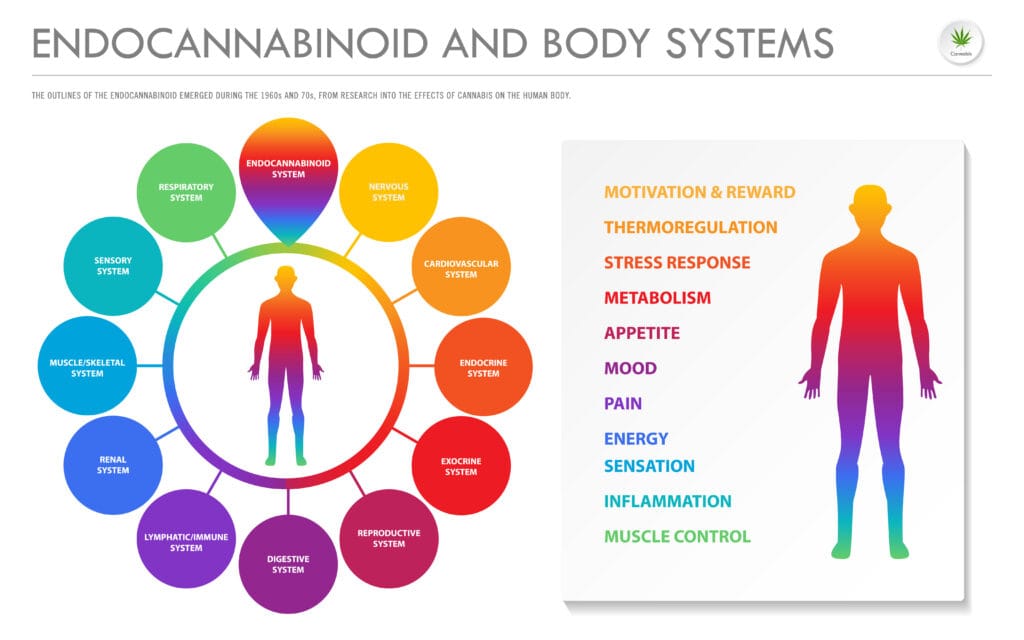
The endocannabinoid system (ECS) is a vital component of the human body, responsible for maintaining homeostasis — the balance that regulates key functions such as pain, mood, appetite, and immune response. When cannabinoids interact with the ECS, they help regulate these processes, offering potential relief for a wide range of health conditions.
Cannabinoids, particularly CBD and CBG, have shown significant promise in addressing various medical concerns, including neurological disorders, chronic pain, anxiety, fibromyalgia, autoimmune diseases, and more. Let’s take a closer look at how these compounds are helping individuals improve their health and quality of life.
Neurological conditions, such as multiple sclerosis (MS), epilepsy, and neuropathy, are often debilitating and challenging to treat. However, research suggests that cannabinoids like CBD and CBG may offer neuroprotective properties that could change the way we approach these conditions.
How Cannabinoids Help: CBD and CBG are known to modulate neurotransmitter activity and reduce inflammation in the nervous system. This makes them effective at alleviating symptoms of nerve damage, muscle spasms, and even the progression of neurological disorders.
Research Spotlight: Several studies have highlighted the potential neuroprotective effects of CBD, with findings suggesting that these compounds may help protect nerve cells from damage and even slow the progression of conditions like neuropathy and MS.
Recharge Clinic’s Solution: At Recharge Clinic, we offer CBD IV therapy as a treatment option for individuals living with neurological discomfort or chronic conditions. By delivering cannabinoids directly into the bloodstream, we ensure maximum bioavailability and faster, more effective relief for patients.
Chronic pain affects millions of people worldwide and can have a profound impact on one’s quality of life. While traditional pain medications, including opioids, are commonly prescribed, they often come with a host of negative side effects. Cannabinoids, however, provide a natural, side-effect-free alternative for pain management.
How Cannabinoids Work: Cannabinoids help alleviate pain through various mechanisms. They desensitize pain receptors (specifically TRPV1 receptors), modulate serotonin levels to improve mood, and reduce inflammation, which is often the root cause of pain.
Recharge Clinic’s Solution: Recharge Clinic’s CBD IV therapy is a highly effective way to address chronic pain. By delivering cannabinoids directly into the bloodstream, we offer a non-invasive and fast-acting method of managing pain, particularly for those who struggle with conditions that traditional medications can’t alleviate.
Anxiety disorders are among the most common mental health conditions worldwide. While there are many treatment options available, cannabinoids, particularly CBD, have shown great promise in providing relief for those dealing with anxiety.
How CBD Helps: Research has shown that CBD interacts with serotonin receptors in the brain, promoting a sense of calm and balance. This has made it an effective treatment for various forms of anxiety, from generalized anxiety disorder (GAD) to social anxiety.
Recharge Clinic’s Solution: For patients seeking rapid relief from anxiety, Recharge Clinic’s CBD IV therapy offers an efficient and effective solution. The intravenous method ensures quick absorption, allowing patients to experience a calm, focused state almost immediately.
Fibromyalgia is a chronic condition that causes widespread pain, fatigue, and other symptoms. Traditional treatments are often insufficient, leaving many patients searching for alternative options. Fortunately, cannabinoids may provide significant relief for those with fibromyalgia.
How Cannabinoids Help: Cannabinoids reduce inflammation, regulate neurotransmitters, and improve sleep quality, addressing the root causes of fibromyalgia symptoms. Many patients report significant improvements in energy levels and a reduction in pain and fatigue after using cannabinoids.
Recharge Clinic’s Solution: Recharge Clinic’s CBD IV therapy delivers therapeutic doses of cannabinoids directly into the bloodstream, offering a fast and effective solution for patients with fibromyalgia. This method provides relief from symptoms, allowing individuals to feel more energized and comfortable.
Multiple sclerosis (MS) is a chronic disease that attacks the nervous system, causing nerve damage, muscle spasms, and a host of other debilitating symptoms. Cannabinoids, particularly CBG and CBN (cannabinol), may offer relief for these symptoms.
How Cannabinoids Help: Cannabinoids act as muscle relaxants, reducing spasms and improving mobility. Additionally, they help improve sleep and reduce overall discomfort associated with MS.
Recharge Clinic’s Solution: For MS patients, Recharge Clinic’s CBD IV therapy can provide natural, non-invasive symptom management. By administering cannabinoids directly into the bloodstream, we offer a rapid and effective way to address the pain, muscle spasms, and fatigue that are common in MS.
Cannabinoids have demonstrated significant anti-inflammatory properties, making them an effective treatment for autoimmune conditions and other diseases associated with immune dysfunction.
How Cannabinoids Help: Cannabinoids help regulate the immune system by inhibiting the production of inflammatory cytokines, which are often elevated in autoimmune diseases like lupus, rheumatoid arthritis, and inflammatory bowel disease.
Recharge Clinic’s Solution: Recharge Clinic’s CBD IV therapy offers a unique approach to modulating immune function, reducing inflammation, and providing relief for patients with autoimmune and inflammatory conditions.
One of the most exciting aspects of cannabinoid therapy is the "entourage effect," where the various cannabinoids, terpenes, and other compounds found in cannabis work together synergistically to enhance therapeutic outcomes. This means that using a full-spectrum cannabinoid extract (as opposed to isolated compounds) can often provide better, more comprehensive relief.
Recharge Clinic’s Solution: At Recharge Clinic, we use high-quality, full-spectrum CBD extracts in our IV therapies to maximize the entourage effect. This approach allows us to deliver more comprehensive and effective results for our patients.
Recharge Clinic is a trusted leader in CBD IV therapy, offering patients a combination of cutting-edge science and compassionate care. Here’s why you should choose Recharge Clinic for your cannabinoid therapy needs:
Conclusion: Cannabinoids offer an exciting new frontier in healthcare, providing a natural, effective alternative to traditional treatments for a variety of conditions. At Recharge Clinic, we are committed to helping patients unlock the full potential of cannabinoids through our advanced CBD IV therapy. Whether you’re dealing with chronic pain, neurological disorders, anxiety, or autoimmune conditions, we’re here to provide you with the support and care you need to feel your best.
References for Further Reading
By embracing cannabinoids through innovative solutions like CBD IV therapy, Recharge Clinic is leading the way in natural, science-backed health care. Discover how these treatments can help you achieve a better quality of life by scheduling a consultation today.


Monday: 8:00 am - 6:00 pm
Tuesday - Wednesday: 8:00 am - 5:30 pm
Thursday: 8:30 am - 6:30 pm
Friday: 8:00 am - 6:00 pm
Saturday: 7:45 am - 1:00 pm
After-hours appointments can be made.
Walk-ins are welcome.
Monday - Friday: 8:30 am - 5:30 pm
NOW OPEN
Walk-ins are welcome.
Monday - Friday: 8:30 am - 5:30 pm
Walk-ins are welcome.
Monday - Friday: 8:30 am-5:30 pm
Walk-ins are welcome.
Monday, Tuesday, Wednesday, and Friday 8 am - 6 pm
Thursday 8 am - 6:30 pm
Saturday 7:45 am - 1 pm
Check back tomorrow for more Merry Markdowns!